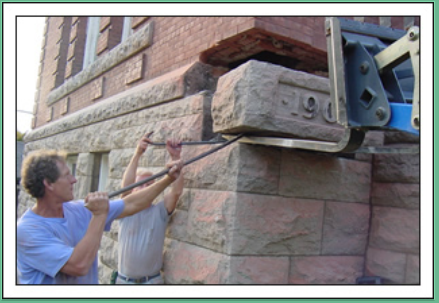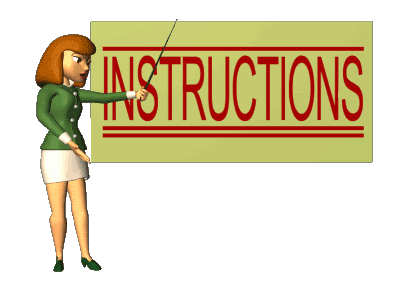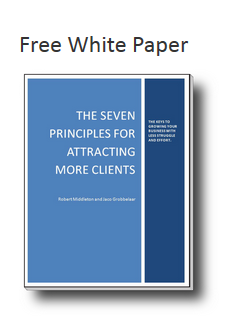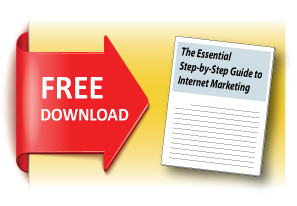New Adventure in Local Inbound Marketing: Cornerstone Content
By Jaco Grobbelaar on Mon, Mar 31, 2014 @ 07:54 AM

 You are always scanning the horizon of ideas seeking one that will lead your local inbound marketing strategy to new heights. I never want you to bounce away from my articles. So I, too, scan horizons and, guess what? I have discovered a local inbound marketing idea for you—cornerstone content creation. What in the world? In case you missed it, Google says that there are 28,700,000 results of “cornerstone content.” I am not so sure about that number, but I do know it’s not a secret.
You are always scanning the horizon of ideas seeking one that will lead your local inbound marketing strategy to new heights. I never want you to bounce away from my articles. So I, too, scan horizons and, guess what? I have discovered a local inbound marketing idea for you—cornerstone content creation. What in the world? In case you missed it, Google says that there are 28,700,000 results of “cornerstone content.” I am not so sure about that number, but I do know it’s not a secret.
So what about cornerstone content creation? How can it fit into your local inbound marketing strategy? To answer this we need to agree on some definitions. We are going to be using Hubspot for some defintions so let’s start there:
Local Inbound Marketing: Sharing is caring and inbound is about creating and sharing content with the world. By creating content specifically designed to appeal to your dream customers, inbound attracts qualified prospects to your business and keeps them coming back for more.
Content Creation (Hubspot): You create targeted content that answers your customer's basic questions and needs, and you share that content far and wide.
Blogging (Hubspot): Inbound marketing starts with blogging. A blog is the single best way to attract new visitors to your website. In order to get found by the right prospective customers, you must create educational content that speaks to them and answers their questions.
Cornerstone from Brian Clark: A cornerstone is something that is basic, essential, indispensable, and the chief foundation upon which something is constructed or developed. It’s what people need to know to make use of your website and do business with you.
And when approached in a strategic fashion, this content can rank very well in the search engines. The key is creating compelling content that’s worth linking to, and then finding a way to get the word out.
Cornerstone content from Christine King: Evergreen or cornerstone content are the articles that are always fresh. They don’t become outdated and Google loves them.
And King says in another article: When you write a cornerstone article, you are writing an article that, no matter what the latest fad is, remains relevant. No matter how many years pass, the article is still fresh and the content (what you’ve written about) is just as true as the first day you wrote it.

Your New Local Inbound Marketing Technique—Cornerstone Content
Now let’s look at what to do with this idea. Joost de Valk talks about the idea of having one wonderful article or webpage and link lots of other pages and articles to it in his article Using Cornerstone Content to make your Site Rank. He called it both a “hub” page and used Brian Clark’s idea of “cornerstone content” from How to Create Cornerstone Content That Google Loves.
Having this super piece of content means that it has a keyword or phrase that you want to rank for. Maybe your customers or clients have asked a question so many times that you wrote an article answering it. Or perhaps you wrote an article about one of your services without appearing to be in a sales mode. The keyword you used in either case is something you knew was of value to the people who visited your site.
How does Valk suggest your create this article if you have not and what do you do with it once you have it?
I have taken Valk’s instructions and put them into a simplified order:

1. Adding that keyword to the title of every page is not going to help. Nor is writing 200 articles about it without one central article to link all those articles to. You need one single page that is the center of the content about that topic. One “hub” page, if you will. (I have added the bolding.)
This is where you pick one keyword and focus your article on that one phrase. This is a basic strategy in your local inbound marketing arsenal. But you don’t want people to leave your page without taking some action. Encouraging them bounce to the hub page for more answers is what this instruction means. You should always write more articles with the same keyword, but you must not forget to link to the hub page.
2. Now let’s talk about where, within your site, that content is going to live. In my opinion, really important content deserves a page within your site’s structure, not a news item / post. It should be easily navigated to within a few clicks.
I am not sure that I totally agree that the page should be a part of the main website. From what I have read in those other articles, you can place this article in your blog, as stated by Hubspot. So you have two options for where you put your cornerstone article. As part of your local inbound marketing strategy, you want to make a decision and stick to that as your cornerstone content.
3. Now, once you have that cornerstone page, it’s time for the next step: creating internal links for your article.
No doubt you already have articles about this subject. You can link them to your cornerstone article right now. You don’t have to wait until you write more articles using the keyword.
4. The easiest way to figure out which pages (on your website) Google thinks are relevant for that keyword is doing a “site:” search in Google.
In case you have written so many articles on the subject over so many years that you have lost track of them, Valk suggests that you use Google to help you find those articles by doing a site search on Google. Did you see the "site(colon)" in his quote? Here's how it looks: keyword(space)site:broadvisionmarketing.com.
5. You will probably find more than a few pages within your site (that you can link back to the cornerstone page). Go into each of those pages and add a link to your new cornerstone content. If possible, use the keyword you’re targeting as the anchor text for that link, but most importantly: link from within the content.
If you have been watching trends on the blogs you read, you will no doubt have seen a new way of informing your readers that you have other articles on the subject in a “Related Articles” section beneath almost everything on a page, even below the author box.
No doubt you have also seen articles with millions of links sprinkled throughout the article.
Neither is a good practice by itself or in excess. For the sake of doing this local inbound marketing strategy using a cornerstone page, you want to go to those related articles and link them with the same keyword to your cornerstone page from within the article and hopefully above the fold.
6. Afterwards, when you’re writing more content for your site, when you touch on a topic related to your cornerstone content, don’t forget to link to it! (This sounds like advice not to write a bunch of articles on the same keyword in a row--Jaco.)
Finally, you are ready to add new content to link to your hub article. Are you finished?
Most certainly not. As part of your new and improved local inbound marketing keyword strategy, you are going to want to have many cornerstone articles complete with one keyword or keyword phrase a piece along with all other articles linking to it. Don’t worry about changing things you have already created. New people who find those other pages will want to know more, linking to your cornerstone page for further information.
And of course don’t forget to continue linking to those wonderful cornerstone articles as you write new content using the keyword.
Takeaway:
Local inbound marketing keyword advice:
- To share your content, find a good ranking keyword or keyword phrase and seek out or write a super article using the keyword for your cornerstone article.
- Find related previously written articles and link them to this wonderful article by linking the keyword to the cornerstone content within the article above the fold.
- Create new articles using this keyword and be sure to link them to the cornerstone article.
- Shampoo, rinse and repeat.
Are you already using this technique without knowing its name? Do you itch to start working on your own cornerstone content right now? Go for it.
To learn more techniquest about business blogging see our new guide: Business Blogging Guide.
 Jaco Grobbelaar is the owner of BroadVision Marketing. BroadVision Marketing works with business owners to put in place inbound and outbound marketing strategies that consistently secure new clients. The BroadVision Marketing Training Center is located in Petaluma, CA and primarily serves companies in the San Francisco Bay area.
Jaco Grobbelaar is the owner of BroadVision Marketing. BroadVision Marketing works with business owners to put in place inbound and outbound marketing strategies that consistently secure new clients. The BroadVision Marketing Training Center is located in Petaluma, CA and primarily serves companies in the San Francisco Bay area.
Jaco can be reached at jaco@broadvisionmarketing.com or 707.766.9778 or connect with Jaco on Facebook - www.facebook.com/broadvisionmarketing - and LinkedIn - www.linkedin.com/in/JacoGrobbelaar.He can also be found at Jaco+.
You May Also Like
These Related Stories

How an Inbound Marketing Coach Could Change Your Business

.png?width=302&height=75&name=BVM%20Logo%20-%20transparent%20(1).png)


No Comments Yet
Let us know what you think